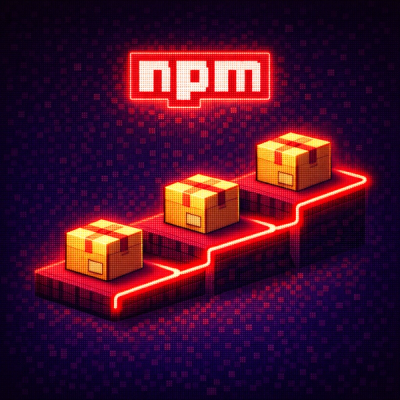
Security News
Insecure Agents Podcast: Certified Patches, Supply Chain Security, and AI Agents
Socket CEO Feross Aboukhadijeh joins Insecure Agents to discuss CVE remediation and why supply chain attacks require a different security approach.
microcosm
Advanced tools
Well-written microservices are small and single-purpose; any non-trivial ecosystem will have a fleet of such services, each performing a different function. Inevitably, these services will use common code and structure; this library provides a simple mechanism for constructing these shared components and wiring them together into services.
microservice is a small software application. It is composed of several smaller pieces
of software, many of which are reusable.component is one of these (possibly reusable) pieces of software.factory is a function used to create a component; it may be an object's constructor.config dict is a nested dictionary with string-valued keys. It contains data used
by factories to create components.object graph is a collection of components that may reference each other (acyclically).binding is a string-valued key. It is used to identify a component within an object graph
and the subsection of the config dict reserved for a component's factory.Define factory functions for components, attach them to a binding, and provide
(optional) configuration defaults:
from microcosm.api import defaults, binding
@binding("foo")
@defaults(baz="value")
def create_foo(graph):
return dict(
# factories can reference other components
bar=graph.bar,
# factories can reference configuration
baz=graph.config.foo.baz,
)
@binding("bar")
def create_bar(graph):
return dict()
Factory functions have access to the object graph and, through it, the config dict. Default
configuration values, if provided, are pre-populated within the provided binding; these may be
overridden from data loaded from an external source.
Wire together the microservice by creating a new object graph along with service metadata:
from microcosm.api import create_object_graph
graph = create_object_graph(
name="myservice",
debug=False,
testing=False,
)
Factories may access the service metadata via graph.metadata. This allows for several
best practices:
debug=True) and unit
testing (testing=True)Reference any binding in the object graph to access the corresponding component:
print(graph.foo)
Components are initialized lazily. In this example, the first time graph.foo is accessed,
the bound factory (create_foo()) is automatically invoked. Since this factory in turn
accesses graph.bar, the next factory in the chain (create_bar()) would also be called
if it had not been called yet.
Graph cycles are not allowed, although dependent components may cache the graph instance to access depending components after initialization completes.
Optionally, initialize the microservice's components explicitly:
graph.use(
"foo",
"bar",
)
While the same effect could be achieved by accessing graph.foo or graph.bar, this
construction has the advantage of initializes the listed components up front and triggering
any configuration errors as early as possible.
It is also possible to then disable any subsequent lazy initialization, preventing any unintended initialization during subsequent operations:
graph.lock()
This library was influenced by the pinject project, but makes a few assumption that allow for a great deal of simplication:
Microservices are small enough that simple string bindings suffice. Or, put another way, conflicts between identically bound components are a non-concern and there is no need for explicit scopes.
Microservices use processes, not threads to scale. As such, thread synchronization is a non-goal.
Mocking (and patching) of the object graph is important and needs to be easy. Unit tests expect to use `unittest.mock library; it should be trivial to temporarily replace a component.
Some components will be functions that modify other components rather than objects that need to be instantiated.
Create a virtualenv
python -m venv venv
. ./venv/bin/activate
Install dependencies
pip install -U -e .
Run the tests
python setup.py nosetests
Lint the code:
NAME=microcosm ./entrypoint.sh lint
NAME=microcosm ./entrypoint.sh typehinting
FAQs
Microcosm - Simple microservice configuration
We found that microcosm demonstrated a healthy version release cadence and project activity because the last version was released less than a year ago. It has 1 open source maintainer collaborating on the project.
Did you know?

Socket for GitHub automatically highlights issues in each pull request and monitors the health of all your open source dependencies. Discover the contents of your packages and block harmful activity before you install or update your dependencies.

Security News
Socket CEO Feross Aboukhadijeh joins Insecure Agents to discuss CVE remediation and why supply chain attacks require a different security approach.

Security News
Tailwind Labs laid off 75% of its engineering team after revenue dropped 80%, as LLMs redirect traffic away from documentation where developers discover paid products.

Security News
The planned feature introduces a review step before releases go live, following the Shai-Hulud attacks and a rocky migration off classic tokens that disrupted maintainer workflows.